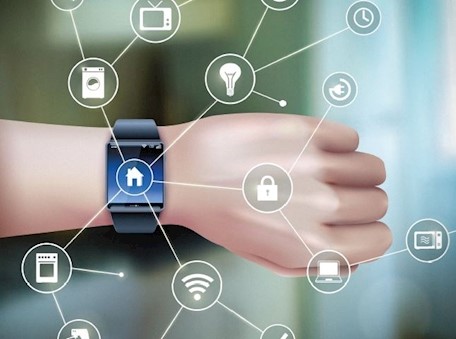How long before your building “knows” more about you than you do yourself? BSRIA’s Dr Michelle Agha-Hossein and Henry Lawson take a look
How long before your building “knows” more about you than you do yourself? As ever-more processing is crammed into smaller, lighter and cheaper devices, it was only a matter of time before people would be able to wear them as they go about their everyday lives.
I am wearing a smart watch as I write this, which is collecting all kinds of information about my movements, the amount of exercise that I take, my heart rate and more. This information can then be transmitted to another device or computer. It can also tell me when, for example, I get a phone call or email. This shows how wearables can transmit information in two directions: information about the wearer can be shared with the outside world, while the same wearable updates the wearer on what is happening in the wider world.
Comfort in buildings is “hot”
Perhaps not surprisingly, it hasn’t taken long for people to find ways in which wearables could be used to improve the inter-relationship between buildings on the one hand, and the people who live or work in them, or visit them.
One factor that is giving this movement legs is the growing emphasis on comfort and wellbeing in buildings, and the attempts to find ways that building technology can contribute to this. But how does one measure wellbeing, let alone optimise it? One way, of course, is to ask people and there is good evidence that the mere fact of being consulted can increase people’s satisfaction and potentially their performance.
However, as anyone who fills in surveys will know, this can also become a tiresome distraction. So what if my watch can work out whether I am tired or too hot or too cold and tell the HVAC system, which can then adjust ventilation or temperature in my area without my having to ask?
Use (and misuse) of wearables
It would also provide objective information about the physical wellbeing of people in buildings, which would potentially be both more precise and more objective than what you might learn by asking them. This immediately raises some challenging questions. The most obvious one relates to data privacy. Where data is shared with a building system, what control can there or should there be over its being seen or used by the people managing the building or even by employers?
If I am seen to be “falling asleep” (or worse) at work, could this lead to intrusive questions about my private life? At the very least, there would need to be clear and accepted rules about who can use this data and for what purposes, and what procedures are required to secure it against illegitimate access or use.
Experience suggests that, if the wearer has a positive incentive to share their data then they are more likely to opt in to a scheme where wearable data is shared. The fact that most of us now, almost half consciously, share a huge amount of personal information via our phones or PCs is an indication of how much people might be willing to share when there is something in it for them. Employees could be incentivised by stressing the health benefits of smart wearables, while customers could be attracted by special promotions relevant to their interests.
Making the building respond in the right way
There is also a practical hurdle to jump over. If I have detailed information about the state of say 200 people in my building then this data will be of limited use unless the building system is granular and responsive enough to fine-tune conditions to meet individual preferences. Sensors will need to locate individuals accurately and, more importantly, the HVAC or lighting system needs to be capable of providing very localised conditions which can then follow a person round a building.
Without this granularity, data provided by wearables will have more limited value, for example in setting a temperature that meets “average” preferences for a whole floor of a building.
BSRIA has already held two highly successful workshops on the subject of wearables and will be monitoring the development of this technology. The technology is definitely becoming available.
Wearables create and maintain a healthy workplace
Ultimately, wearables provide valuable hard data about employees’ health. If the data is studied along with qualitative data gathered through occupant surveys, a comprehensive picture of the workplace can be established. The BSRIA Occupant Wellbeing (BOW) survey can be used along with data from wearables to indicate whether, and to what extent, employees’ health is correlated to and affected by the physical factors of the workplace. This information can help building owners and operators maintain and control their buildings better.
Dr Michelle Agha-Hossein
Building Performance Lead, BSRIA Sustainable Construction Group
Building Services Research & Information Association (BSRIA)
Tel: +44 1344 465600
Please note: this is a commercial profile.














![[VIDEO] UK-based firm reveals ‘world’s first’ fully AI-driven architectural project Studio Tim Fu has revealed the 'world's first' fully AI-driven architectural project in Slovenia, developing six luxury villas on the Lake Bled Estate](https://www.pbctoday.co.uk/news/wp-content/uploads/2025/03/Interior-1-studio-tim-fu-218x150.gif)